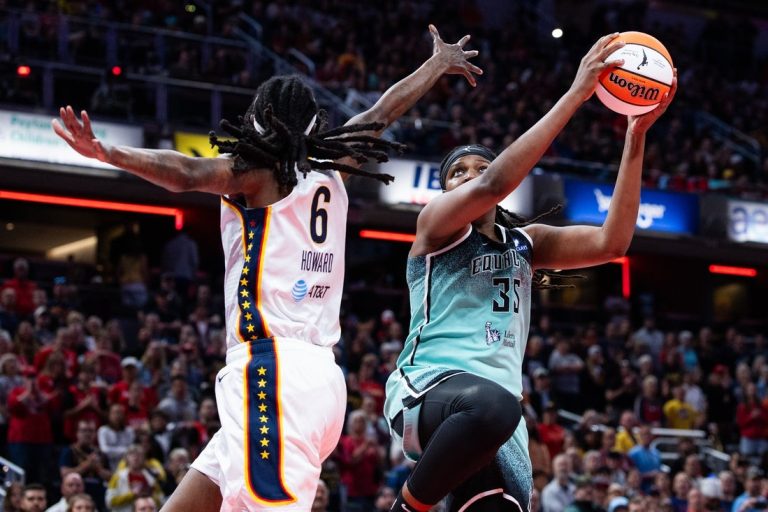MBW Views is a series of exclusive op/eds from eminent music industry people… with something to say. In the following op/ed, PPL’s Director of International, Laurence Oxenbury, examines how CMOs should lead the charge towards a global neighbouring rights business of $4 billion by 2030…
The growth of neighbouring rights since the turn of the century has been well documented, transforming from a footnote in the global music rights landscape to a significant portion of the market – and a hugely important source of income for artists, musicians and record companies.
There is, however, still a huge amount of growth yet to come. From $2.7 billion in 2023, global performance revenues are forecast by Goldman Sachs to reach $4 billion by the end of the decade. This leaves over $1 billion in untapped revenue to be captured by 2030.
As the recent Music In The Air report has suggested, emerging markets will be central to unlocking this growth. While the traditional hubs of neighbouring rights revenue remain strong and are continuing their positive trajectory, these emerging economies are showing their potential to become significant sources of income for performers and recording rightsholders in the years to come.
But the extra billion won’t just appear naturally – it will only be realised if the required infrastructure, partnerships and trust are built to support it. Collective management organisations (CMOs) like PPL must lead the way in establishing partnerships, sharing expertise, and supporting the creation of the infrastructure needed to support performers and recording rightsholders in these territories.
Doing this successfully is vital not just for the neighbouring rights sector, but for the entire global music industry.
From stadium speakers to royalty statements
As new markets grow, it is important to act fast in forging partnerships and helping build the right environment for performers and rightsholders to benefit from neighbouring rights revenue.
Indeed, embracing these markets will benefit artists and rightsholders everywhere. PPL’s agreement with ISAMRA in India in 2023, for example, allowed UK performers to earn royalties for the use of their music in India for the first time, and for Indian performers to get paid for the use of their music in the UK.
PPL’s 2023 reciprocal agreement with RAYS also enabled PPL members to be paid for the use of their work in Azerbaijan, as well as enabling RAYS’ performer and rightsholder members to earn royalties when their music is used in the UK.
As well as business partnerships, PPL can bring valuable expertise to these markets. Our work with these growing CMOs often goes beyond simple finances – it is in mentorship and support to help shape and grow the neighbouring rights ecosystem.
The material impact that an established neighbouring rights infrastructure can have in these countries is nowhere more apparent than in major sporting events.
“This is vital not just for the neighbouring rights sector, but for the entire global music industry.”
The final of the Indian Premier League (IPL), the world’s biggest cricket tournament, played on 3rd June in front of 100,000 fans in Ahmedabad, is a powerful example.
Music is a huge part of the atmosphere at IPL matches, booming out of the speakers at every pause in play. The labels and artists who recorded these tracks, including those from the UK who are popular in India, can earn royalties when their music is played in these stadiums.
With 74 matches over the two-month tournament, and with over 500 million viewers tuning in on TV over the course of the season, this can be a significant source of revenue for these labels and artists.
We saw a similar phenomenon at last year’s Azerbaijan Grand Prix, where for the first time UK performers and rightsholders could earn royalties for the use of their music, with dance-pop recordings performing particularly well.
In stark contrast, the USA will be hosting three of the world’s biggest sporting events in the coming years: the Men’s Football World Cup in 2026, the Olympics in 2028 and the Men’s Rugby World Cup in 2031.
While efforts are ongoing to establish more comprehensive rights for artists and labels in the US, as it stands performers and recording rightsholders won’t be remunerated when their music is played to the thousands of spectators at these events. This is a powerful reminder of what is at stake in emerging markets.
In the absence of a robust neighbouring rights infrastructure around the world, thousands of performers and recording rightsholders may miss out on income as the overall market grows.
Opportunities across the globe
And there is plenty of growth yet to come. In neighbouring rights, the most rapidly growing regions sit at opposite ends of the globe – in the form of South America and Southeast Asia. PPL recently reached reciprocal agreements with rightsholder CMOs in Indonesia, as well as with local CMOs representing rightsholders and performers in Guatemala and Paraguay.
Territories like these have the potential to become pivotal hubs for the global music industry. Indonesia is the largest economy in Southeast Asia – but will only realise that potential with the right infrastructure and international collaboration.
These reciprocal arrangements can be extremely powerful on a local level – when artists and rightsholders see that their CMO is receiving payments from abroad, this can help to reinforce the trust they have in the work of that organisation. Strengthening this trust on both a local and international level is a crucial part of growing the music rights infrastructure in these regions.
Empowering the creative community
Establishing and growing CMOs naturally benefits the individual performers and recording rightsholders affiliated with those societies, but the impact is more far-reaching than that – it also helps to grow these territories’ domestic
creative industries.
When performers are properly compensated, they can build careers and reinvest in their craft. They pay taxes, contribute to local economies and inspire the next generation of creators. A robust CMO doesn’t just serve its members, it uplifts an entire sector.
“Countries without strong neighbouring rights miss out on all these economic and cultural benefits.”
It also brings with it all the other benefits of having a larger pool of artists and musicians operating in the country – more live music, more creative collaboration, and more cultural expression. Countries without strong neighbouring rights miss out on all these economic and cultural benefits.
This is a big factor in the establishment of CMOs in the United Arab Emirates, for example. As the country looks to grow its creative economy from the ground up, having a strong neighbouring rights infrastructure is crucial to improving overall GDP.
Beyond the billion
The benefits of expanding the global presence of neighbouring rights therefore go far beyond capturing the extra $1 billion+ of revenue that Goldman Sachs forecasts. This is important enough in itself, but the impact can be even more fundamental than that, helping to create a more equitable and dynamic global music ecosystem.
By proactively engaging with new markets, established CMOs can play a crucial role in this process. Recent partnerships demonstrate the mutual benefits of such collaborations, enabling artists around the world to receive royalties from new sources and territories. Embracing these markets is therefore an essential step in driving not just the growth of neighbouring rights, but the growth of the global music industry as a whole.

MBUK is available as part of a MBW+ subscription – details through here.
All physical subscribers will receive a complimentary digital edition with each issue.Music Business Worldwide








